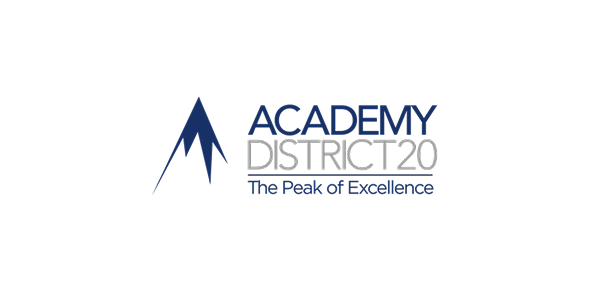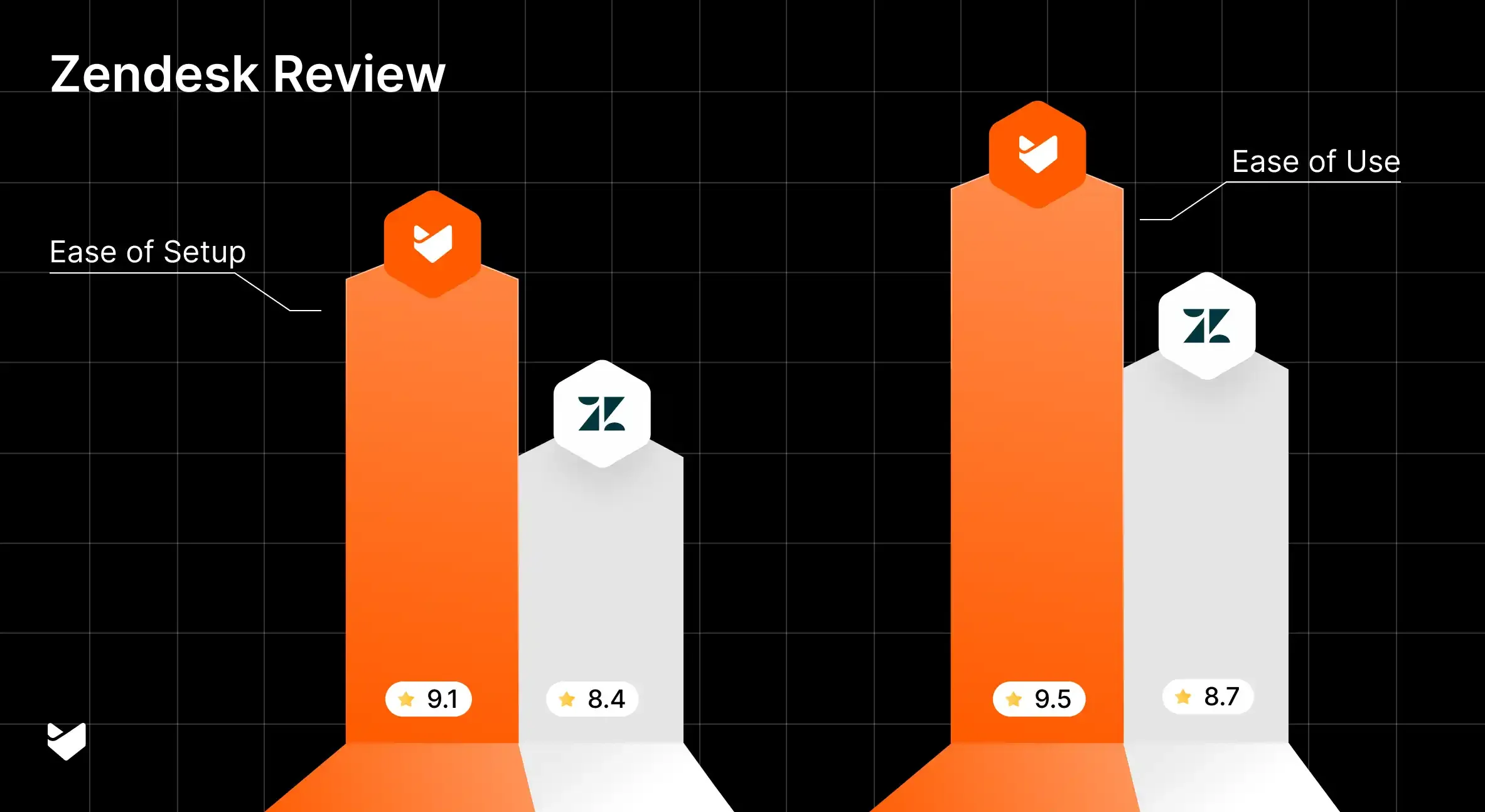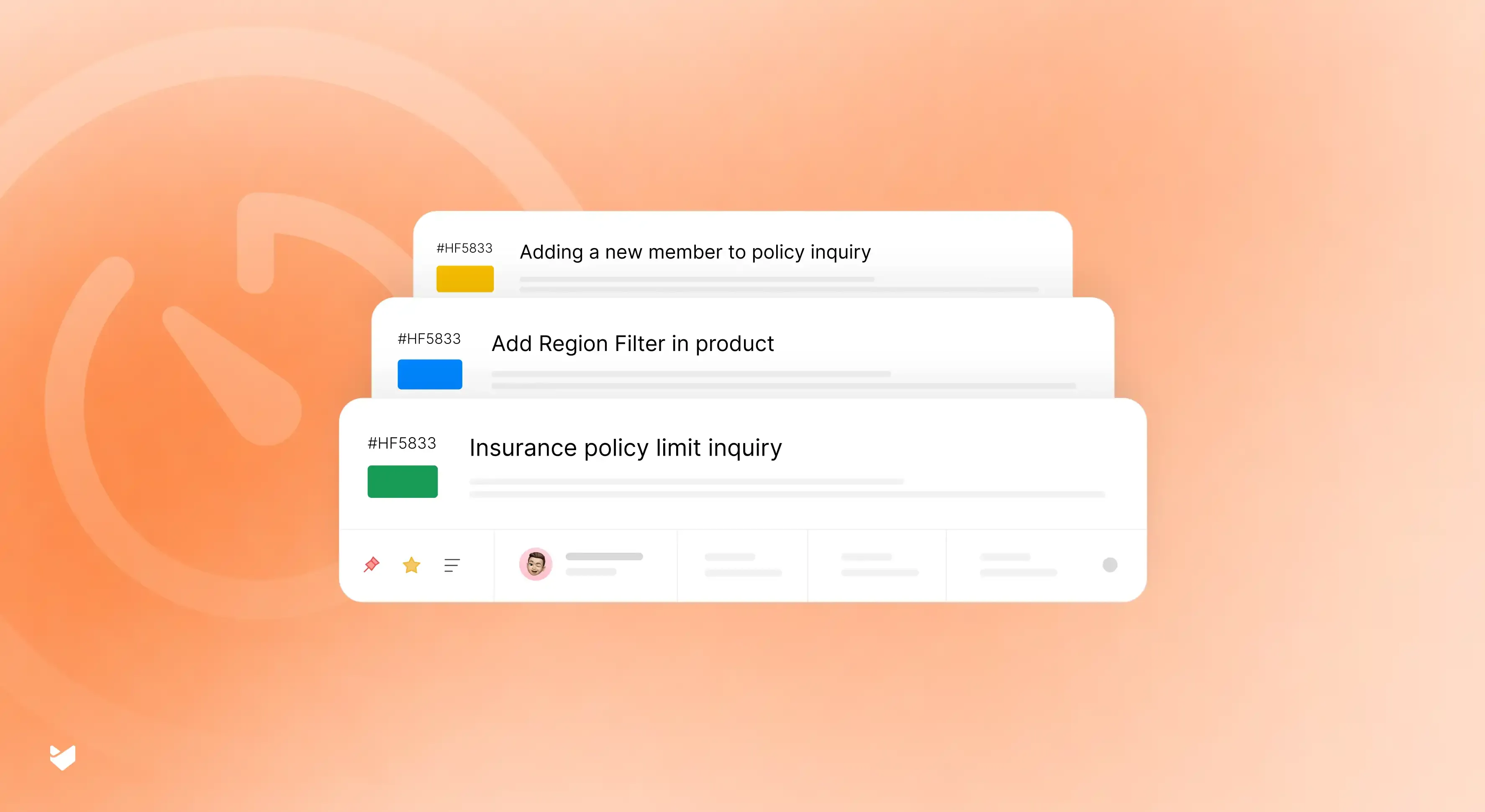The Complete Guide to Customer Complaint Management Systems in 2025

Shalin
Founder & CEO HappyFox
October 21, 2025
Picture this: A customer experiences an issue with your product, reaches out through social media, and by the time they receive a response, they've already shared their frustration with hundreds of followers. Effective complaint management isn't just about addressing issues—it's about transforming negative experiences into opportunities for customer loyalty.
A robust customer complaint management system serves as the foundation for this transformation, allowing businesses to efficiently capture, track, and resolve customer grievances while gathering valuable insights to prevent future problems.
In this comprehensive guide, we'll explore everything you need to know about customer complaint management systems, from fundamental concepts to implementation strategies, helping you select the right solution for your business needs.
A customer complaint management system is a specialized platform that centralizes and streamlines the entire complaint handling process. It converts customer grievances from multiple channels into trackable tickets, enabling businesses to efficiently manage, resolve, and analyze complaint data.
These platforms transform unstructured feedback into organized, actionable tickets that move through predefined workflows. Support teams can efficiently track, prioritize, and resolve issues while maintaining visibility throughout the process.
By implementing a structured approach to complaint handling, businesses can ensure consistent resolution processes, maintain service level agreements (SLAs), and generate valuable business intelligence from complaint patterns.
Implementing a strategic approach to trouble ticket management delivers substantial benefits:
- Enhanced Response Times: Properly categorized and prioritized tickets ensure urgent matters receive immediate attention
- Improved Issue Resolution: Comprehensive ticket tracking leads to faster, more accurate problem solving
- Increased Customer Satisfaction: Streamlined processes result in better customer experiences and higher loyalty
- Team Productivity: Support agents spend less time on administrative tasks and more on solving customer problems
- Valuable Data Collection: Every ticket becomes a source of insights to improve products and services
- Operational Efficiency: Automated workflows reduce manual effort and minimize human error
Why Your Business Needs a Dedicated Complaints Management System
According to research by the Customer Experience Professionals Association, businesses that effectively manage complaints can see up to a 30% increase in customer retention. Here's why implementing a dedicated complaints management system is crucial:
When handled properly, complaints present an opportunity to demonstrate your commitment to customer satisfaction. A Harvard Business Review study found that customers whose complaints were resolved quickly and effectively often became more loyal than those who never experienced an issue.
A comprehensive complaints management system ensures that no grievance falls through the cracks, allowing you to turn potential detractors into brand advocates.
Complaint data offers invaluable insights into product deficiencies, service gaps, and customer expectations. By systematically analyzing this data, you can identify recurring issues and implement proactive solutions before they affect more customers.
Modern complaint management systems provide advanced analytics that transform raw complaint data into actionable business intelligence, enabling continuous improvement across your organization.
Without a structured system, managing complaints can become a resource-intensive process with inconsistent outcomes. A dedicated complaint management system:
- Reduces resolution time by 25-40% through automation and workflow optimization
- Minimizes duplicate efforts with centralized complaint tracking
- Decreases operational costs by streamlining the resolution process
- Improves staff productivity by providing the right tools and information
Many industries face strict regulatory requirements regarding complaint handling. A robust complaint management system helps ensure compliance by:
- Creating an auditable trail of all complaint interactions
- Maintaining secure records of resolutions
- Generating required regulatory reports
- Ensuring complaint handling follows mandated procedures
How Customer Complaint Management Systems Work
A complaint management system works by creating a structured framework for handling grievances from initial capture through final resolution. Here's a breakdown of the typical workflow:
-
1. Complaint Capture and Categorization:
The system collects complaints from multiple channels—email, social media, phone calls, web forms—and transforms them into standardized tickets. Each complaint is automatically categorized based on factors like:
- Issue type (billing, product defect, service failure)
- Priority level (urgent, high, medium, low)
- Customer segment (premium, standard, new customer)
- Product or service involved
This categorization ensures that each complaint follows the appropriate resolution path.
-
2. Assignment and Routing:
Once categorized, the system automatically routes complaints to the appropriate department or specialist based on predefined rules. This ensures that:
- Technical issues go to product teams
- Billing questions reach finance representatives
- Service complaints connect with customer experience specialists
Advanced systems can even analyze complaint content to determine the best-qualified agent based on expertise and previous resolution success.
-
3. Resolution Process and Tracking:
The system guides agents through established resolution workflows while tracking progress against SLAs. Key features include:
- Step-by-step resolution procedures
- Access to relevant knowledge base articles
- Internal collaboration tools for complex issues
- Automated alerts for approaching SLA deadlines
- Documentation of all resolution actions
-
4. Customer Communication:
Throughout the resolution process, the system facilitates clear, consistent communication with the customer, including:
- Automated acknowledgment of complaint receipt
- Status updates at key resolution milestones
- Notification of resolution with explanation and next steps
- Satisfaction surveys to gauge resolution quality
-
5. Analysis and Reporting:
After resolution, the system transforms complaint data into actionable insights through:
- Trend analysis of common complaint types
- Performance metrics for resolution efficiency
- Customer satisfaction measurements
- Identification of potential product or service improvements
Top Features to Look for in a Complaint Management System
When evaluating customer complaint management solutions, prioritize these essential features:
-
Omnichannel Complaint Collection:
Your customers voice their concerns through diverse channels—your system should capture them all. Look for platforms that seamlessly integrate complaints from:
- Email communications
- Social media platforms
- Live chat interactions
- Phone conversations
- Web forms and surveys
- In-person feedback
- Mobile app feedback
The best systems unify these channels into a single interface, allowing agents to maintain conversation context regardless of where the customer reaches out.
-
Intelligent Automation:
Automation transforms complaint management from a reactive process to a proactive strategy. Valuable automation features include:
- Smart categorization and routing: Automatically assign complaints to the appropriate team based on content analysis
- Automated responses: Provide immediate acknowledgment and basic information for common issues
- Workflow triggers: Initiate specific processes based on complaint type or customer segment
- SLA monitoring: Automatically escalate tickets approaching deadline
- Follow-up scheduling: Set reminders for check-ins on complex resolutions
-
Comprehensive Analytics and Reporting:
To transform complaints into business improvements, look for robust analytics capabilities:
- Trend identification: Spot patterns in complaint types, products, or customer segments
- Root cause analysis: Tools that help identify underlying issues behind symptom-level complaints
- Performance metrics: Measure resolution time, first-contact resolution rates, and customer satisfaction
- Custom reporting: Generate reports tailored to specific business needs or regulatory requirements
- Predictive analytics: Identify potential future complaint areas before they escalate
-
Knowledge Management Integration:
Effective complaint resolution requires easy access to relevant information. Prioritize systems that offer:
- Searchable knowledge base of common resolutions
- Contextual suggestion of relevant articles based on complaint content
- Ability to convert successful resolutions into knowledge articles
- Customer-facing self-service options to prevent complaints
- Continuous improvement mechanisms for knowledge content
-
Collaboration Tools:
Complex complaints often require input from multiple departments. Look for:
- Internal commenting and team communication features
- Assignment and re-assignment capabilities
- Cross-department visibility into resolution progress
- File and screenshot sharing tools
- Approval workflows for sensitive or high-value resolutions
-
Customization and Scalability:
Your complaint management needs will evolve as your business grows. Choose a system that offers:
- Configurable workflows that adapt to your processes
- Custom fields for industry-specific information
- Expandable user licenses as your team grows
- Integration capabilities with your existing tech stack
- Mobile accessibility for on-the-go management
Top Customer Complaint Management Systems in 2025

HappyFox



HappyFox offers a comprehensive complaint management solution that combines robust ticketing capabilities with advanced automation. HappyFox particularly excels in providing customizable self-service options that help reduce complaint volume while maintaining a unified agent workspace for those issues that do require personal attention.
Trusted by over 2,000 organizations across 70+ countries, HappyFox brings exceptional ease of use and intuitive design to complaint handling workflows. The platform's straightforward implementation and minimal learning curve allow teams to quickly establish sophisticated processes without extensive technical training.
Key Features
-
Omnichannel complaint capture:
Converts complaints across email, web, phone, chat, and social media into centralized tickets for unified complaint management.
-
Intelligent complaint categorization and routing:
Automatically categorizes incoming complaints and routes them to appropriate teams based on severity, type, and urgency levels.
-
Advanced workflow automation:
Streamline complaint handling with intelligent automation, escalation rules, and custom workflows designed for multi-step resolution processes.
-
Comprehensive SLA management:
Maintain service commitments with automated SLA tracking, breach alerts, and escalation workflows to ensure timely complaint resolution.
-
Real-time dashboards and analytics:
Access detailed insights and visual dashboards that reveal complaint trends, root causes, and performance metrics for proactive management.
-
Integrated knowledge base:
Empower agents with searchable knowledge resources and solution templates to quickly resolve frequently encountered complaint types.
-
Multi-brand support for complex organizational structures:
Centrally manage complaints across multiple brands with customized portals, branding, and complaint handling processes for each entity.
-
Compliance-focused documentation and audit trails:
Maintain detailed records and audit logs of all complaint interactions to meet regulatory requirements and compliance standards.
-
AI-powered insights for proactive complaint management:
Leverage artificial intelligence to automatically categorize incoming complaints and suggest relevant response templates based on complaint content and history.
-
Seamless integration with popular business tools:
Connect with CRM, project management, accounting, and other business applications to create a unified complaint management ecosystem.
-
Intuitive, user-friendly interface:
Simplify complaint handling with an easy-to-navigate interface that minimizes learning curves and maximizes agent productivity from day one.
Key Strengths
-
Intuitive Interface & Rapid Setup:
No steep learning curve or complex onboarding—get your support system running in under an hour with powerful features that don't require extensive training.
-
Customization Flexibility:
Adapts to any team or use case with deep customization across ticketing, support centers, workflows, automations, and reporting—going beyond one-size-fits-all solutions.
-
Comprehensive AI-Powered Support:
AI-driven productivity with instant ticket summaries, smart response suggestions, automatic resolution recommendations, priority detection, and knowledge base optimization.
-
Scalable & Transparent Pricing:
Flexible pricing that grows with your team—start small and scale effortlessly without hidden costs. Plus unlimited-agent plans with cost-saving potential for larger teams.
-
Exceptional Customer Support Culture:
Entire team, including leadership, is committed to your success—ensuring faster escalations, quicker resolutions, and direct access to decision-makers.
-
Enterprise Features Without Complexity:
Get all the functionality you need without unnecessary complexity, steep learning curves, or the overhead typically associated with enterprise solutions.
Ideal For
-
- Startups with limited resources that need quick setup, AI automation, and affordable pricing that scales.
- Growing companies that need simple, all-in-one solutions without complexity or high costs.
- Organizations with multiple teams (IT, HR, Facilities) that need unified collaboration for internal and external support.
- Large operations that need enterprise-grade security, global deployment, and deep system integrations.


We chose HappyFox for its clean, user-friendly interface, easy queue configuration, comprehensive task automation and solid security framework.
Chris Eggleston
Director of IT, Academy District 20

Zendesk



Zendesk's complaint management capabilities come as part of its broader customer service platform. The platform's strength lies in its flexibility and extensibility, making it suitable for large organizations with complex complaint handling requirements across multiple departments or regions.
Key Features
-
Extensive third-party integrations for complex tech stacks
-
Robust workflow automation and routing
-
Omnichannel compliant capture
-
Comprehensive analytics and business intelligence
-
Enterprise-grade security and compliance features
Best For
-
Enterprise organizations requiring extensive integrations and scalability
Recommended Reading:
Learn how Zendesk vs. HappyFox compare.

Zoho Desk



Zoho Desk provides a context-aware help desk with robust complaint management features. Zoho Desk stands out for its affordability combined with sophisticated AI capabilities that help smaller teams manage complaints efficiently with fewer resources.
Key Features
-
AI-powered assistant (Zia) for ticket categorization and response suggestions
-
Comprehensive multichannel complaint capture
-
Time-tracking and SLA management
-
Blueprint feature for creating customized complaint resolution processes
-
Extensive reporting and analytics capabilities
Best For
-
Small to mid-sized businesses seeking affordable complaint management with AI capabilities
Compare Now:
HappyFox vs Zoho Desk - Which One Stands Out?

Freshdesk



Freshdesk offers a streamlined approach to complaint management. Freshdesk's straightforward implementation and competitive pricing make it ideal for businesses looking to quickly establish or upgrade their complaint management capabilities without extensive IT resources.
Key Features
-
Simple, intuitive interface for both agents and administrators
-
Scenario automation for common complaint workflows
-
Built-in collaboration tools for cross-team resolution
-
Extensive self-service capabilities to reduce complaint volume
-
Field service management for on-site resolution needs
Best For
-
Growing businesses that need a scalable solution with minimal setup complexity
We also recommend reading:
Learn how HappyFox vs Freshdesk compare
Implementing a Customer Complaint Management System: Best Practices
Successful implementation extends beyond selecting the right software. Follow these best practices to maximize the effectiveness of your complaint management system:
-
1. Define Clear Complaint Handling Processes:
Before system configuration, document your ideal complaint handling workflow:
- Create clear categorization criteria for different complaint types
- Establish routing rules based on expertise and availability
- Define SLA timelines for each complaint category
- Document escalation paths for complex or high-priority issues
- Specify required information for each resolution stage
These defined processes will guide your system configuration and ensure consistent complaint handling.
-
2. Customize the System to Your Business Needs:
Avoid the one-size-fits-all approach by customizing:
- Complaint categories specific to your products or services
- Custom fields for industry-relevant information
- Automated responses tailored to your brand voice
- Resolution workflows aligned with your team structure
- Reporting dashboards focused on your key metrics
Taking time to configure these elements ensures the system serves your unique business requirements rather than forcing you to adapt to generic processes.
-
3. Develop a Comprehensive Training Program:
Even the most intuitive system requires proper training:
- Create role-specific training modules for agents, managers, and administrators
- Develop scenario-based exercises using real complaint examples
- Establish clear documentation for common procedures
- Implement a feedback loop for continuous system refinement
- Schedule regular refresher training as the system evolves
Thorough training ensures consistent usage and maximizes return on your system investment.
-
4. Establish Meaningful Metrics:
Define key performance indicators (KPIs) that align with your customer service goals:
- First-response time by complaint category
- Average resolution time across different issues
- First-contact resolution percentage
- Customer satisfaction with resolution process
- Complaint volume by product, service, or location
These metrics will help you evaluate system effectiveness and identify improvement opportunities.
-
5. Create a Feedback Loop for Continuous Improvement:
Transform complaint data into actionable insights:
- Schedule regular review sessions to analyze complaint trends
- Create cross-functional teams to address recurring issues
- Develop action plans based on complaint analytics
- Update products, services, or processes to prevent future complaints
- Refine the complaint management system based on user feedback
This systematic approach to improvement ensures your complaint management system drives ongoing business enhancement.
How Different Industries Leverage Complaint Management Systems
Different industries face unique challenges when handling customer complaints. Here's how various sectors can use a complaint management system to address their specific needs:
-
Education:
- Streamline communication between students, parents, faculty, and administration for issue resolution
- Track and address academic concerns, facility problems, and policy violations
- Manage sensitive complaints like academic integrity issues or discrimination reports
- Create automated workflows for common complaints about grades, scheduling, or campus services
- Develop targeted knowledge bases to reduce repeat complaints and empower self-resolution
-
Healthcare:
- Ensure HIPAA-compliant processing of patient grievances and feedback
- Coordinate resolution between clinical and administrative departments
- Track patient safety concerns and potential quality improvement opportunities
- Document complaints for accreditation requirements and regulatory compliance
- Analyze complaint patterns to identify service improvement opportunities across facilities
-
Financial Services:
- Maintain secure, compliant channels for handling sensitive financial complaint data
- Document complaint resolution for regulatory reporting requirements
- Implement strict SLAs for resolving account disputes and service issues
- Use complaint analytics to identify potential fraud patterns or security vulnerabilities
- Create escalation paths for complaints requiring regulatory intervention or ombudsman review
-
Retail:
- Process high volumes of product quality and delivery complaints efficiently
- Connect complaint management with inventory and order management systems
- Implement special workflows for warranty claims and product returns
- Use complaint trends to identify recurring product defects or service gaps
- Automate compensation workflows for goodwill gestures and make-good resolutions
-
Technology:
- Link complaint data with product development to prioritize bug fixes and improvements
- Separate feature requests from technical support issues with specialized workflows
- Implement version-specific routing to match technical complaints with appropriate experts
- Create knowledge bases from recurring issues to improve self-service resolution
- Analyze complaint trends to guide product enhancement and documentation improvement
-
Manufacturing:
- Track product defect complaints across distribution networks
- Connect customer complaints with quality control processes for rapid response
- Manage warranty claims and product replacement workflows
- Document complaint data for potential recall identification and regulatory reporting
- Route design-related complaints to product engineering for future improvements
By tailoring complaint management systems to address industry-specific challenges, organizations can transform negative feedback into valuable insights for operational improvement and enhanced customer experience.
Overcoming Common Challenges in Complaint Management
Implementing a customer complaint management system may present challenges. Here are strategies to address the most common obstacles:
-
Challenge 1: Resistance to Change:
Solution: Implement a change management strategy that:- Clearly communicates the benefits to all stakeholders
- Involves key users in system selection and configuration
- Provides comprehensive training and support
- Celebrates early wins and showcases improvements
- Addresses concerns promptly and transparently
-
Challenge 2: Integration with Existing Systems:
Solution: Prioritize integration capabilities by:- Conducting a thorough assessment of current systems
- Selecting a complaint management solution with robust API capabilities
- Implementing phased integration starting with critical systems
- Creating fallback procedures for temporary integration gaps
- Documenting integration points for future system changes
-
Challenge 3: Balancing Automation and Personal Touch:
Solution: Create a balanced approach by:- Identifying appropriate automation points that enhance rather than replace personal service
- Implementing sentiment analysis to flag complaints needing human empathy
- Creating clear escalation paths from automated to human interaction
- Personalizing automated communications to maintain brand voice
- Regularly reviewing automated responses for effectiveness and appropriateness
-
Challenge 4: Extracting Actionable Insights:
Solution: Develop a structured analysis approach:- Create custom dashboards focused on key business questions
- Schedule regular cross-functional review sessions of complaint data
- Implement a formal process for translating insights into action plans
- Train team members on data interpretation and analysis
- Establish clear ownership for improvement initiatives based on insights
Conclusion
A robust customer complaint management system transforms potentially negative interactions into opportunities for strengthening customer relationships.
By implementing the right system with thoughtful processes, businesses can:
- Demonstrate genuine commitment to customer satisfaction
- Identify and address systemic issues before they escalate
- Create more efficient operational processes
- Drive continuous improvement across the organization
- Build a customer-centric culture focused on exceptional experiences
Remember that the true value of a complaint management system extends beyond efficient ticket handling—it's about creating a systematic approach to learning from customer feedback and continuously enhancing your products, services, and processes.
By selecting the right system, implementing it thoughtfully, and using the resulting insights strategically, you can transform your complaint management from a reactive necessity into a proactive competitive advantage.
Frequently Asked Questions
Can a complaint management system integrate with our existing CRM?
Most modern complaint management systems offer integration capabilities with popular CRM platforms through APIs, pre-built connectors, or middleware solutions. When evaluating systems, provide your integration requirements to vendors and request specific examples of similar integrations they've successfully implemented.
How long does implementation typically take?
Implementation timelines vary based on system complexity, customization requirements, and organizational readiness. Simple deployments may be completed in 2-4 weeks, while complex enterprise implementations with extensive customization and integration can take 3-6 months. Working with a vendor that offers implementation support and creating a detailed project plan can help ensure a smooth, timely deployment.
How can we measure ROI on a complaint management system?
Key ROI indicators include:
Reduction in resolution time and associated labor costs
Increased first-contact resolution percentages
Improvement in customer retention rates
Decreased complaint escalation frequency
Reduction in repeat complaints
Operational improvements from complaint insights
Track these metrics before and after implementation to quantify your return on investment.
What's the difference between a complaint management system and a regular help desk system?
While there's overlap in functionality, complaint management systems typically offer specialized features for handling negative feedback:
More sophisticated workflow options for complex resolution paths
Advanced analytics specific to complaint patterns and trends
Specialized escalation and prioritization for high-risk situations
Regulatory compliance features for industries with complaint handling requirements
Root cause analysis tools for systemic issue identification
Many comprehensive help desk solutions include robust complaint management capabilities, making them suitable for organizations seeking unified customer service technology.































